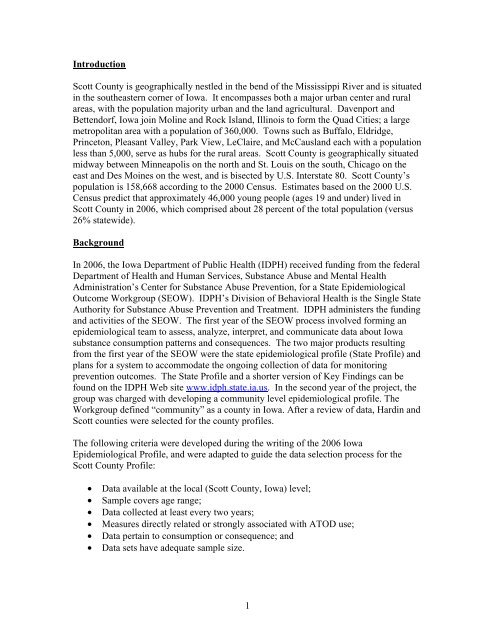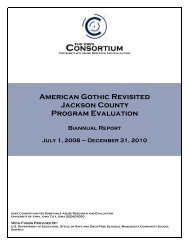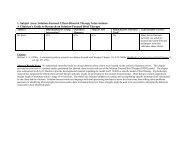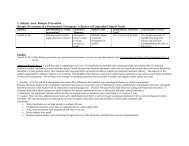Scott County Substance Use Epidemiological Profile 2008 - Iowa ...
Scott County Substance Use Epidemiological Profile 2008 - Iowa ...
Scott County Substance Use Epidemiological Profile 2008 - Iowa ...
You also want an ePaper? Increase the reach of your titles
YUMPU automatically turns print PDFs into web optimized ePapers that Google loves.
Introduction<br />
<strong>Scott</strong> <strong>County</strong> is geographically nestled in the bend of the Mississippi River and is situated<br />
in the southeastern corner of <strong>Iowa</strong>. It encompasses both a major urban center and rural<br />
areas, with the population majority urban and the land agricultural. Davenport and<br />
Bettendorf, <strong>Iowa</strong> join Moline and Rock Island, Illinois to form the Quad Cities; a large<br />
metropolitan area with a population of 360,000. Towns such as Buffalo, Eldridge,<br />
Princeton, Pleasant Valley, Park View, LeClaire, and McCausland each with a population<br />
less than 5,000, serve as hubs for the rural areas. <strong>Scott</strong> <strong>County</strong> is geographically situated<br />
midway between Minneapolis on the north and St. Louis on the south, Chicago on the<br />
east and Des Moines on the west, and is bisected by U.S. Interstate 80. <strong>Scott</strong> <strong>County</strong>’s<br />
population is 158,668 according to the 2000 Census. Estimates based on the 2000 U.S.<br />
Census predict that approximately 46,000 young people (ages 19 and under) lived in<br />
<strong>Scott</strong> <strong>County</strong> in 2006, which comprised about 28 percent of the total population (versus<br />
26% statewide).<br />
Background<br />
In 2006, the <strong>Iowa</strong> Department of Public Health (IDPH) received funding from the federal<br />
Department of Health and Human Services, <strong>Substance</strong> Abuse and Mental Health<br />
Administration’s Center for <strong>Substance</strong> Abuse Prevention, for a State <strong>Epidemiological</strong><br />
Outcome Workgroup (SEOW). IDPH’s Division of Behavioral Health is the Single State<br />
Authority for <strong>Substance</strong> Abuse Prevention and Treatment. IDPH administers the funding<br />
and activities of the SEOW. The first year of the SEOW process involved forming an<br />
epidemiological team to assess, analyze, interpret, and communicate data about <strong>Iowa</strong><br />
substance consumption patterns and consequences. The two major products resulting<br />
from the first year of the SEOW were the state epidemiological profile (State <strong>Profile</strong>) and<br />
plans for a system to accommodate the ongoing collection of data for monitoring<br />
prevention outcomes. The State <strong>Profile</strong> and a shorter version of Key Findings can be<br />
found on the IDPH Web site www.idph.state.ia.us. In the second year of the project, the<br />
group was charged with developing a community level epidemiological profile. The<br />
Workgroup defined “community” as a county in <strong>Iowa</strong>. After a review of data, Hardin and<br />
<strong>Scott</strong> counties were selected for the county profiles.<br />
The following criteria were developed during the writing of the 2006 <strong>Iowa</strong><br />
<strong>Epidemiological</strong> <strong>Profile</strong>, and were adapted to guide the data selection process for the<br />
<strong>Scott</strong> <strong>County</strong> <strong>Profile</strong>:<br />
• Data available at the local (<strong>Scott</strong> <strong>County</strong>, <strong>Iowa</strong>) level;<br />
• Sample covers age range;<br />
• Data collected at least every two years;<br />
• Measures directly related or strongly associated with ATOD use;<br />
• Data pertain to consumption or consequence; and<br />
• Data sets have adequate sample size.<br />
1






